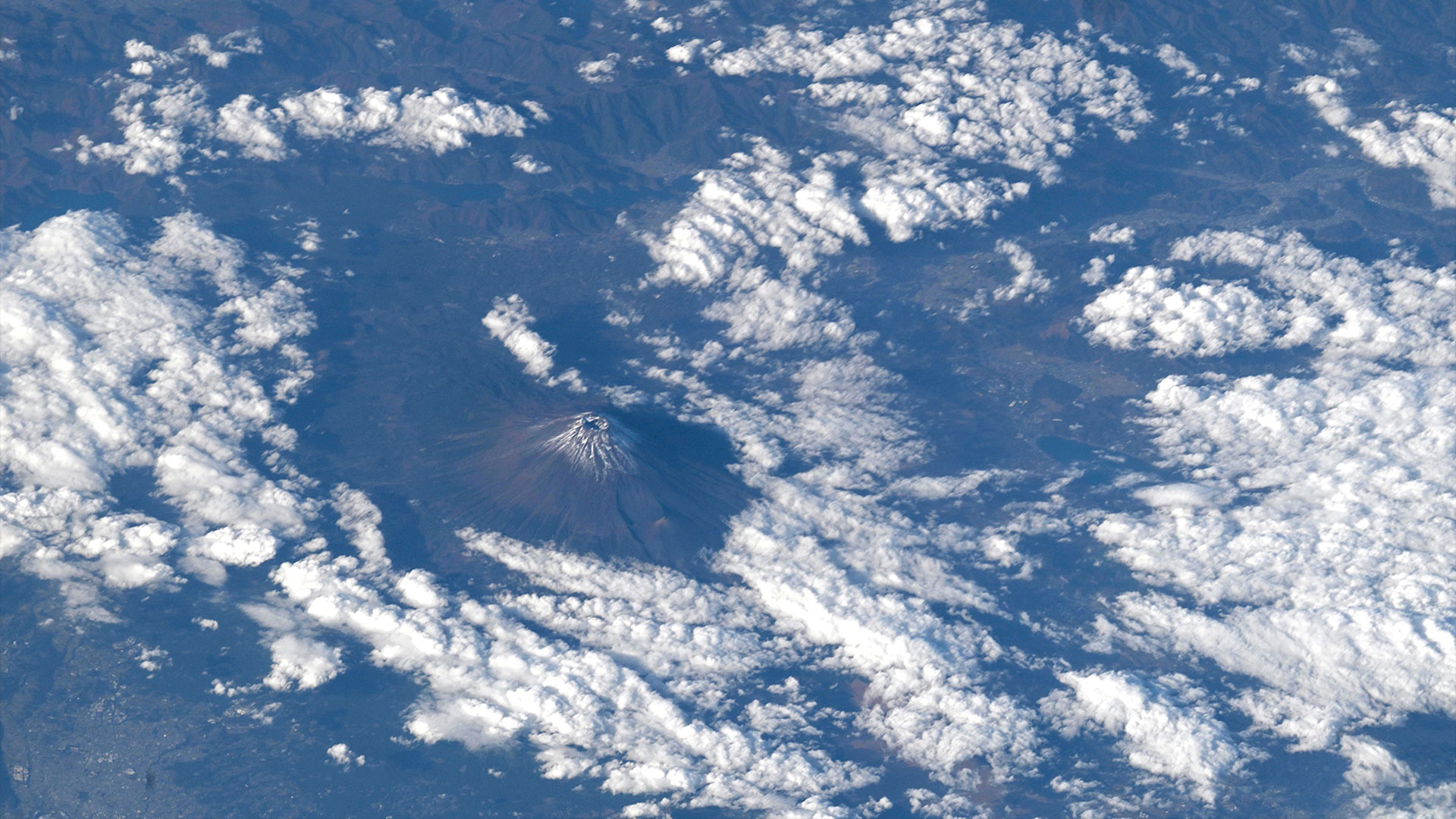Missing 'Alien: Earth' already? 'The Thing' could be the extraterrestrial horror flick you're looking for
John Carpenter's Antarctica-set sci-fi classic clearly had a significant influence on "Alien: Earth".
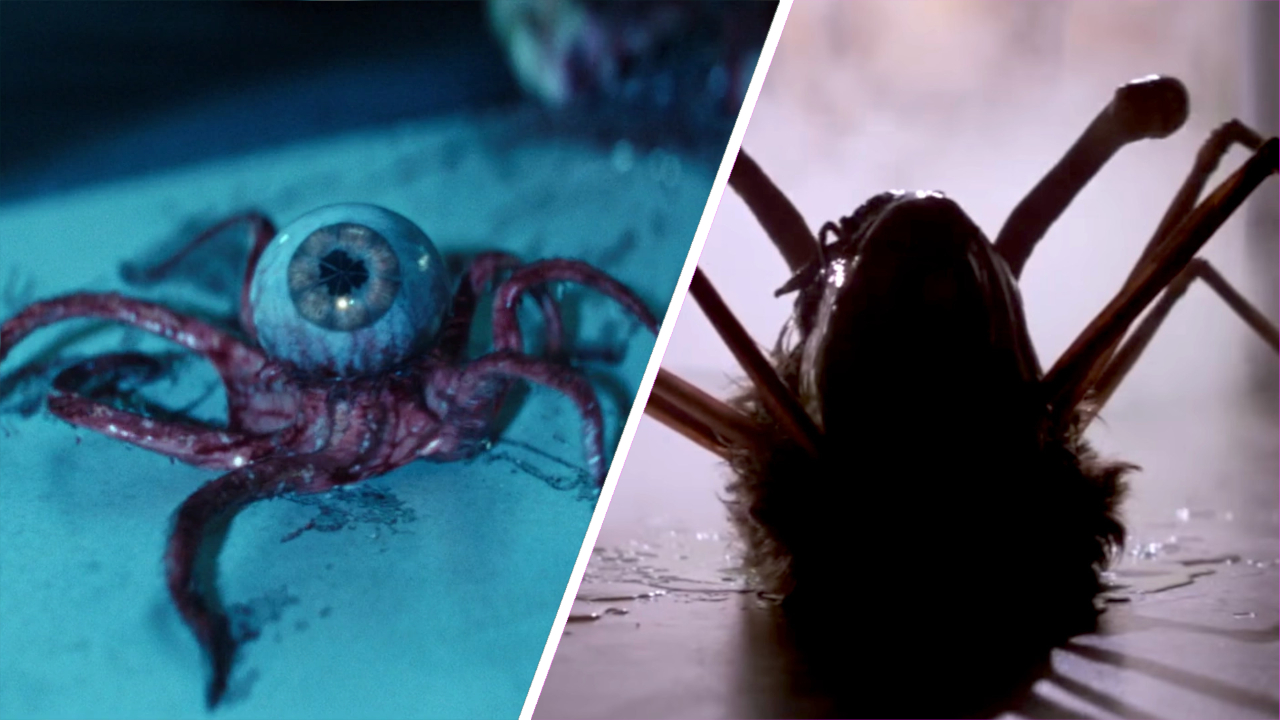
It's June 1982, and sci-fi fans heading to movie theaters have a choice to make. On one screen, they can watch a feel-good family movie about a kindly alien who befriends a bunch of kids and makes their bikes fly. On the other they can check out a nihilistic horror about a dozen stir-crazy men at an Antarctic research station, who find themselves fighting for their lives — and the future of planet Earth — when an unwelcome visitor from outer space comes to stay.
The first film was, of course, "ET: The Extra-Terrestrial", which went on to become the highest-grossing film of all time — a title it held until its director, Steven Spielberg, broke his own record with "Jurassic Park" a decade later. The other was John Carpenter's "The Thing", a Universal stablemate that turned out to be a major critical and commercial disappointment. Its bleak story and visceral body horror were apparently a turn-off for audiences who preferred their aliens house-trained and non-lethal.
But time has ultimately been kind to "The Thing", which now sits just behind "Alien" in the pantheon of sci-fi horror movies. In fact, in some ways, it's had as much of an influence on "Alien: Earth" as Ridley Scott's 1979 classic.

Every so often, a movie director finds themselves on a golden run of movies, as Rob Reiner did with his unbroken sequence of "This is Spinal Tap", "The Sure Thing", "Stand by Me", "The Princess Bride", "When Harry Met Sally…", "Misery", and "A Few Good Men". Heading into "The Thing", John Carpenter had been on an all-killer, no-filler run of his own, thanks to "Assault on Precinct 13", "Halloween", "The Fog", and "Escape from New York". (You could even add his lo-fi debut, "Dark Star", to that list, depending on your tolerance for aliens who look like beach balls.)
This string of indie hits was enough for Universal to give Carpenter his first studio movie, a remake — or reimagining, to use the modern parlance — of 1951's "The Thing from Another World". The studio had been eyeing up a new spin on John W Campbell's 1938 novella "Who Goes There?" since the mid-'70s — "Texas Chain Saw Massacre" director Tobe Hooper developed a version inspired by "Moby-Dick" — but "Alien"'s chest-bursting success had pushed it further up the to-do list.
Although Carpenter was a big enough fan of "The Thing from Another World" to have characters in "Halloween" watching the black-and-white classic on TV, he certainly didn't fancy covering old ground. "But I re-read the novella and thought, 'You know, this is a pretty good story here,'" he said in an interview with Syfy Wire. "We get the right writer, the right situation, we could do something."

Teaming up with screenwriter Bill Lancaster (son of Hollywood legend Burt), he shifted the action from the Arctic to the Antarctic, and populated the base with a ragtag, all-male bunch of scientists, pilots, and support staff who shouldn't really be in the same room together, let alone trapped thousands of miles from civilisation at the United States National Science Institute Station 4. With no internet, their only entertainment comes from booze, ping-pong, rudimentary video games, and VHS tapes of hokey old game shows.
Breaking space news, the latest updates on rocket launches, skywatching events and more!
The 12 doomed men would be played by a mixture of character actors and up-and-comers — Childs was the first credited movie role for future Emmy-winner Keith David, who's since gone on to star in "Armageddon", "Pitch Black" and loads more. The most recognizable faces were arguably future "Cocoon" star Wilford Brimley and Kurt Russell, who'd worked with Carpenter on a 1979 TV movie about Elvis Presley and, more famously, "Escape From New York". Russell was the last person to join the ensemble as cynical helicopter pilot RJ MacReady.
But, as brilliantly cast as they were, this group was always going to be creature fodder, their on-screen life expectancies severely limited. The real star of "The Thing" is the reason we're still talking about it four decades later, and with all due respect to the Xenomorph, it's probably the nastiest, scariest extra-terrestrial of them all.
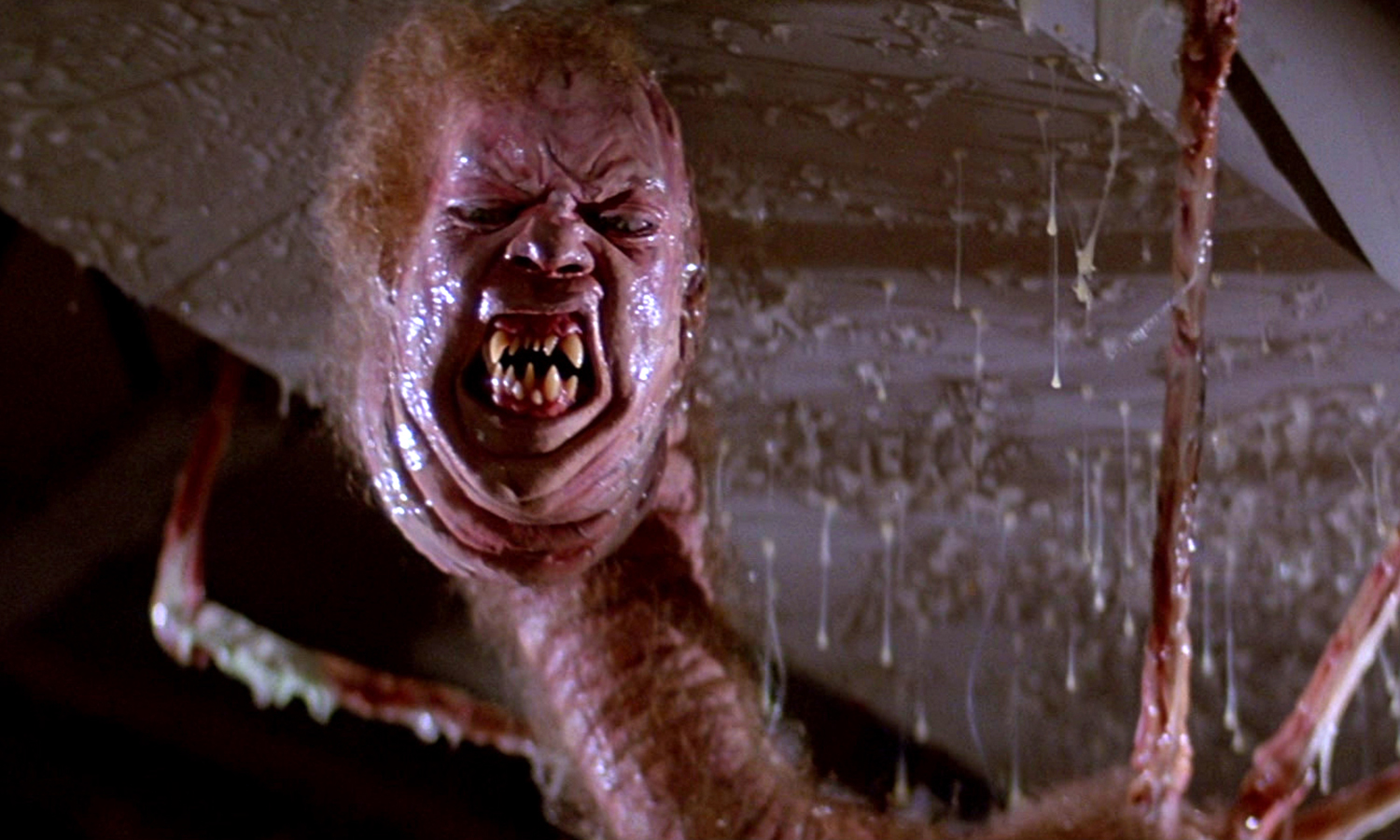
Aside from the fact it comes from another world — as confirmed by the arrival of a flying saucer in the film's opening frames — we know precious little about this antisocial South Pole tourist.
Not that it sets off any alarm bells the first time we see it, having taken the form of a very cute dog, mercilessly hunted down by a pair of angry Norwegians. They are not, however, anti-canine. Over the course of Carpenter's masterful slow-build first act, we gradually learn that the Americans' Antarctic neighbors uncovered an alien spacecraft in the ice, and brought something very nasty home with them. A subsequent trip to the Norwegians' smouldering base reveals death, destruction, and a hideously distorted corpse — though they probably should have left that particular discovery where it was.
But while shapeshifting aliens that assimilate and imitate their hosts are bad news for the human race — scientist Blair calculates that the species could take over the entire planet in a matter of years — they're great news for pushing the limits of special effects. In order to realize his vision in this pre-CG era, Carpenter turned to prosthetics wunderkind Rob Bottin, who'd cut his teeth with Rick Baker before going solo on the 1981 werewolf movie that wasn't set in London, "The Howling".
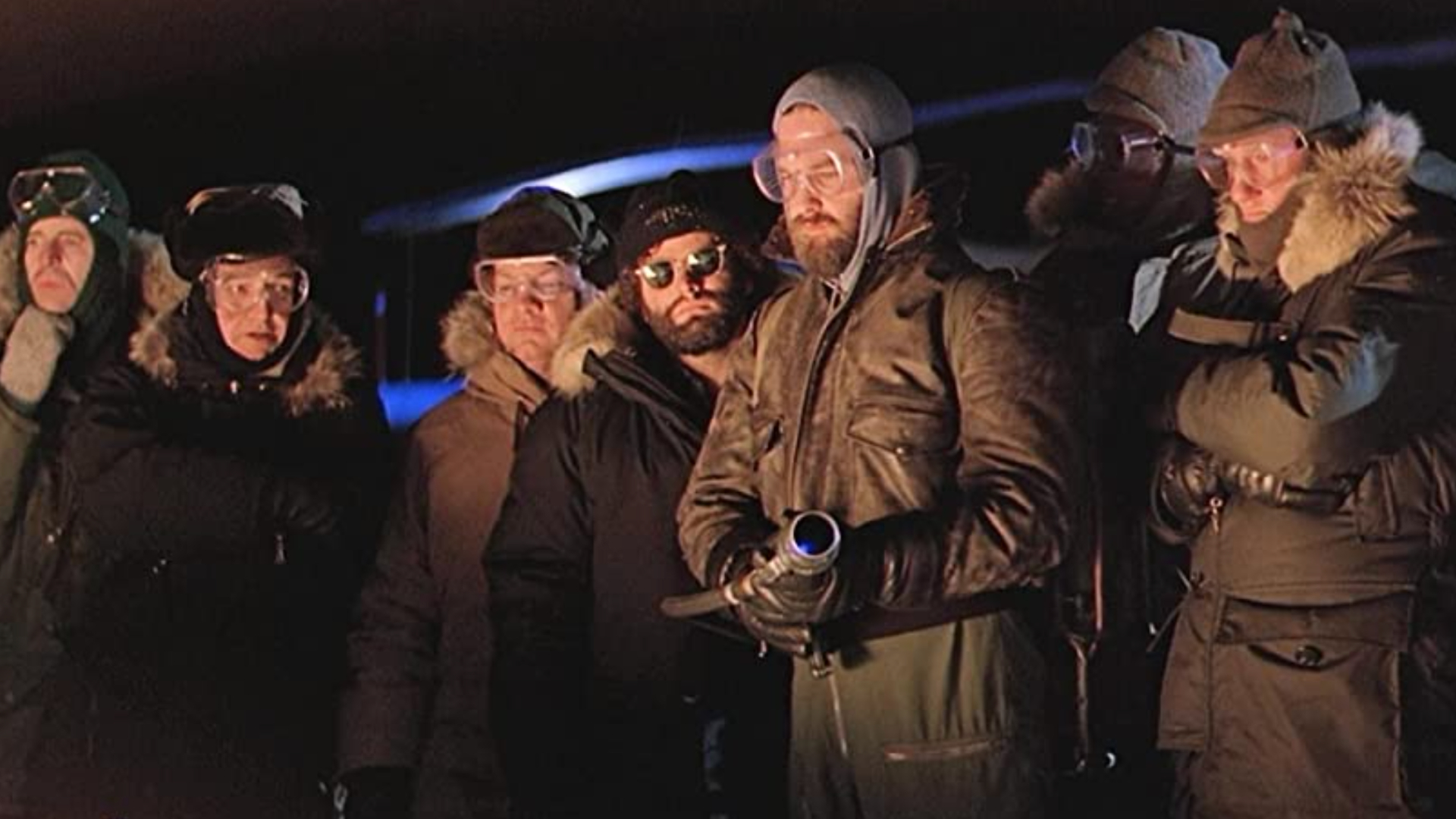
Bottin reportedly had an unprecedented effects budget to work with, and gave himself one of the broadest briefs imaginable. After all, he was the one who suggested that the Thing (no other name is provided) could take on any form, whether an Earth-based host or some alien creature it had encountered on its previous travels. The job proved so vast that Bottin ended up in hospital with exhaustion.
From his suffering came a pinnacle in the history of in-camera movie effects, a "how on earth did they do that?" showcase of models, puppets, and an awful lot of rubber. One of the creature's complex iterations in the final act required more than 40 operators on set.
But the fact that CG wasn't an option back in 1982 undeniably makes the effects more memorable, as the stretching and snapping of latex gives the Thing's transformations an icky, otherworldly quality that computers simply can't match. (A fact that anyone who's seen the unnecessary 2011 prequel — also, coincidentally, a flop — will attest to.)
Carpenter also knew how to accentuate the magic Bottin was unleashing on-set. During the film's most famous sequence, in which a flatlining patient's chest turns into a set of giant jaws, the director substituted Dr Copper actor Richard Dysart for a real-life amputee in a mask — Carpenter reasoned that nobody would be looking at the actor's face when the character's arms are shockingly bitten off. Then, as the victim's disembodied head sprouts legs and eyes before scuttling away, you can't help but echo Palmer (David Clennon)'s now-iconic remark: "You gotta be f***ing kidding".
The visuals are supported by impeccable work from supervising sound editor David Yewdall, who used animal noises manipulated and distorted beyond recognition to ensure that closing your eyes would offer little protection from the horrors unfolding on screen. With its new menagerie of extra-terrestrial pets — particularly the chillingly aware eye creature, Trypanohyncha Ocellus — "Alien: Earth" has clearly been heavily inspired by "The Thing". Indeed, in both cases, the creatures' shared penchant for literally burrowing under your skin is laser-targeted on the fear centers of your brain.
Ironically, the head of distribution at Universal had expected "The Thing" to be the bigger hitter in the summer of '82, predicting that "ET" was too kiddie-focused to become a major hit. How wrong he was.

It seems that critics and audiences were unprepared for the horrors Carpenter was sending their way, with many reviews simultaneously applauding Bottin's effects work while declaring them excessively gruesome. Carpenter's career also seemed to suffer in "The Thing"'s aftermath, as Universal slashed the budget on his planned Stephen King adaptation, "Firestarter", prompting the director to quit and make "Christine" for rival studio Columbia instead.
Forty-three years on, however, it's widely regarded as a classic. Indeed, in a year that may just be the greatest in sci-fi history — as well as "ET", 1982 saw the debuts of "The Wrath of Khan", "Tron", "Poltergeist" and (released the same weekend as "The Thing") "Blade Runner" — Carpenter's film more than holds its own.
It certainly has the best ending, as the last men standing (we won't spoil their identities here) "wait here for a little while, [to] see what happens". Of course, Carpenter has no intention of clearing up the ambiguity: "I know who was the Thing in the end, but I'm not telling you," he told Syfy Wire. "I just feel like it's a secret that must be kept. The gods came down and swore me to secrecy."
"The Thing" is available to stream on Peacock in the US, and Prime Video and ITVX in the UK. You can watch "Alien: Earth" on Hulu in the US and Disney+ in the UK.
Watch The Thing on Peacock (US):
<p>Select (with ads): <a href="https://imp.i305175.net/c/221109/828265/11640?subId1=hawk-custom-tracking&sharedId=hawk&u=https%3A%2F%2Fwww.peacocktv.com%2Fplans%2Fall-monthly" target="_blank">$7.99/month or $79.99/year<br />Premium (no ads): <a href="https://imp.i305175.net/c/221109/828265/11640?subId1=hawk-custom-tracking&sharedId=hawk&u=https%3A%2F%2Fwww.peacocktv.com%2Fplans%2Fall-monthly" target="_blank">$10.99/month or $109.99/yearWatch Alien: Earth on Hulu (US):
<p>Hulu (with ads): <a href="https://click.linksynergy.com/fs-bin/click?id=kXQk6%2AivFEQ&offerid=763711.206&type=3&subid=0&u1=hawk-custom-tracking" target="_blank">$11.99/month or $119.99/year<br />Hulu (no ads): <a href="https://click.linksynergy.com/fs-bin/click?id=kXQk6%2AivFEQ&offerid=763711.206&type=3&subid=0&u1=hawk-custom-tracking" target="_blank">$18.99/monthWatch Alien: Earth on Disney+ (UK/International):
<p>Standard (with ads): <a href="https://disneyplus.bn5x.net/c/221109/564546/9358?subId1=hawk-custom-tracking&sharedId=hawk&u=https%3A%2F%2Fwww.disneyplus.com%2F" target="_blank">£5.99/month<br />Standard (no ads): <a href="https://disneyplus.bn5x.net/c/221109/564546/9358?subId1=hawk-custom-tracking&sharedId=hawk&u=https%3A%2F%2Fwww.disneyplus.com%2F" target="_blank">£9.99/month or £99.90/year<br />Premium (4K): <a href="https://disneyplus.bn5x.net/c/221109/564546/9358?subId1=hawk-custom-tracking&sharedId=hawk&u=https%3A%2F%2Fwww.disneyplus.com%2F" target="_blank">£14.99/month or £149.90/year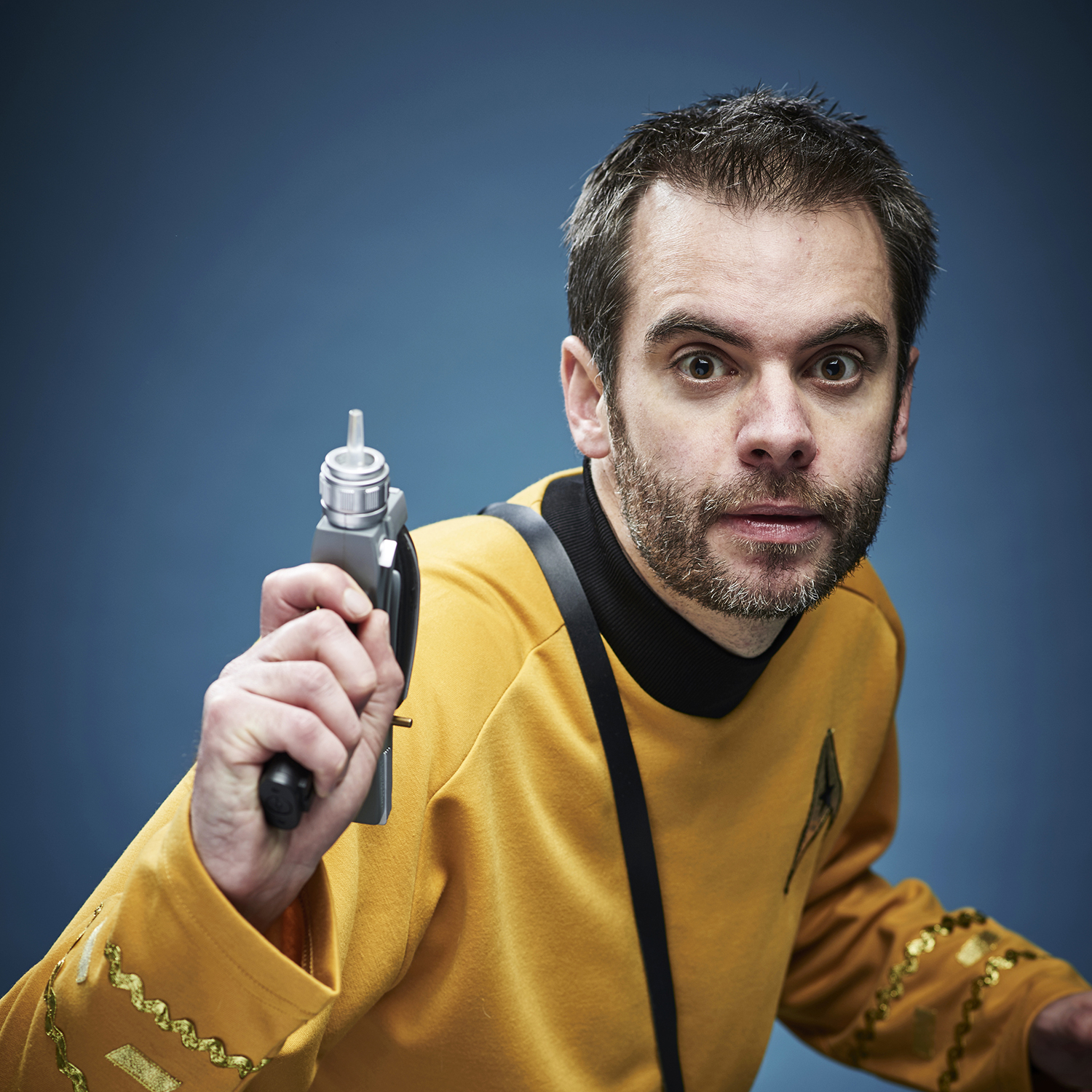
Richard's love affair with outer space started when he saw the original "Star Wars" on TV aged four, and he spent much of the ’90s watching "Star Trek”, "Babylon 5” and “The X-Files" with his mum. After studying physics at university, he became a journalist, swapped science fact for science fiction, and hit the jackpot when he joined the team at SFX, the UK's biggest sci-fi and fantasy magazine. He liked it so much he stayed there for 12 years, four of them as editor.
He's since gone freelance and passes his time writing about "Star Wars", "Star Trek" and superheroes for the likes of SFX, Total Film, TechRadar and GamesRadar+. He has met five Doctors, two Starfleet captains and one Luke Skywalker, and once sat in the cockpit of "Red Dwarf"'s Starbug.
You must confirm your public display name before commenting
Please logout and then login again, you will then be prompted to enter your display name.




